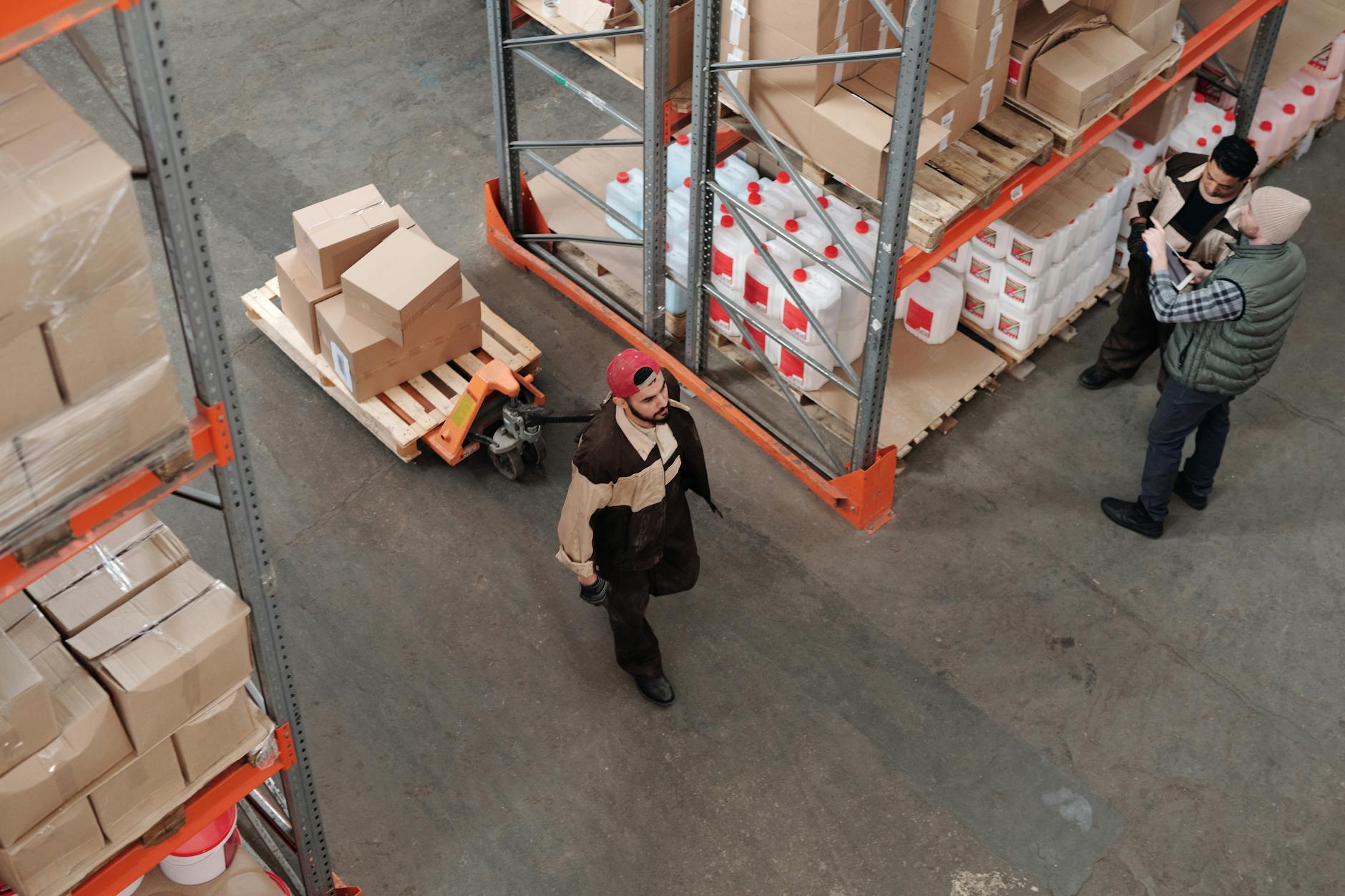How to Integrate Environmental Data into Safety Protocols in Australia

Benefits of Environmental Data
The integration of environmental data into safety protocols can significantly enhance our workplace safety measures. With safety software tailored to identify and mitigate risks, we fortify our commitment to both employee well-being and eco-friendliness. These systems assist in real-time monitoring, ensuring that every detail is accounted for. This is much like the meticulous care given to the landscapes of the Royal Botanic Gardens Melbourne, where each ecosystem is carefully managed.
Enhancing Safety Measures
By employing robust incident reporting software, companies can efficiently document and respond to potential hazards. These tools enable us to flag issues promptly, preventing minor mishaps from escalating into major incidents. The proactive approach mirrors the eco-design philosophies seen in Melbourne Central, where sustainability is central to every innovation.
Compliance with Regulations
Ensuring compliance with local and federal environmental safety regulations is no small feat. Utilizing the latest tools aids in keeping this process seamless and accurate. Automated reports and reminders from the software can save valuable time and resources, ensuring full adherence to legislative requirements.
Identifying Potential Hazards
Spotting potential hazards before they materialize is a hallmark of effective environmental data use. By analyzing patterns and trends through the available data, we can implement preventive strategies to mitigate risks. This echoes the sustainability workshops at CERES Community Environment Park, where knowledge-sharing leads to proactive environmental care.
In summary, the use of environmental data can revolutionize how we approach workplace safety, driving towards a sustainable and compliant future.
Identifying Relevant Data Sources
When considering effective approaches to gather comprehensive environmental data that can inform safety strategies, local sources stand out as invaluable. Establishing connections with local environmental agencies ensures you stay current with region-specific risks and compliance requirements, which can be particularly beneficial near Melbourne's vibrant eco-design shops at Melbourne Central. Engaging with these agencies can provide insights into environmental trends and potential hazards that influence safety measures across various industries.
EHS Software Integration
Incorporating contractor management software Australia into your systems can streamline data collection, turning complex datasets into actionable insights. The best systems allow seamless integration with existing infrastructure, enhancing both user experience and efficiency. In tandem with health and safety software, these platforms are designed to track and analyze critical safety data, making it accessible for decision-making. This synchronization ensures that environmental and safety metrics remain visible and manageable.
Community and Stakeholder Input
No safety strategy is complete without considering input from the community and stakeholders. Feedback from these groups can spotlight overlooked areas or emerging concerns. Actively engaging with them echoes the collaborative spirit found in sustainability workshops at CERES Community Environment Park, fostering a collective approach to eco-friendly incident management. This involvement not only enriches your data sources but also strengthens your organization's commitment to proactive environmental stewardship and compliance.
Implementing Data into Protocols
Adapting Existing Systems
Incorporating environmental data into your safety protocols is essential for improving workplace safety. One way to achieve this is by adapting existing systems with EHS software. This software is crucial in aligning your current protocols with modern safety and environmental standards. Tailoring it to fit your legacy systems can maximize its effectiveness and help maintain a conducive work environment. Explore updates and modules that bolster sustainability and make note of the comprehensive setups at places like CERES Community Environment Park.
Training and Development
Introducing incident management software necessitates a well-structured training and development program. Ensure your team understands its functionalities and integration processes. Workshops focusing on incident reporting, analysis, and corrective measures can bridge knowledge gaps. Encourage a collaborative approach similar to the workshops conducted around eco-design at Melbourne Central. This will facilitate smooth transitions and empower your team to utilize the software effectively.
Monitoring and Feedback Loops
Continuous monitoring and establishing feedback loops are fundamental to refining safety protocols. Implement dashboards and real-time alerts to track environmental data seamlessly. Gathering user feedback can lead to impactful enhancements, ensuring protocols are not just passive but adaptive. This method, often seen in community-driven initiatives like those at the Royal Botanic Gardens Melbourne, emphasizes the importance of continuous dialogue and improvement.
Overcoming Integration Challenges
Legacy System Compatibility
Navigating the complexities of integrating new technology with legacy systems can be daunting, especially in an eco-focused environment. Integrating innovative safety management software into existing frameworks often requires a strategic approach to avoid disruptions. A critical first step is conducting a thorough systems audit to understand compatibility issues. Identifying gaps and overlaps between current systems and new software can inform customization needs, ensuring they work together harmoniously.
User-Friendly Solutions
Ensuring that new software solutions are intuitive and accessible to all employees is paramount. The success of incident management systems hinges on comprehensive user adoption. Therefore, involving end-users in the selection process is essential. This collaborative approach not only increases buy-in but also highlights user-specific challenges, allowing for tailored solutions. Training programs should be practical and inclusive, possibly utilizing platforms familiar to employees to minimize resistance.
Continuous Improvement Methods
Implementing continuous improvement methodologies is crucial for refining system integration over time. Encouraging regular feedback through user surveys or suggestion boxes can identify user pain points and areas for enhancement. Engaging teams in sustainability workshops, like those at Melbourne’s CERES Community Environment Park, can foster a culture of continuous learning and innovation. Iterative updates and system tweaks based on real-world usage ensure the software remains relevant, effective, and user-friendly. This ongoing commitment to improvement nurtures a dynamic safety culture that adapts to evolving environmental and safety demands.
Mitigating Common Pitfalls in Environmental Data Integration
Prioritizing Data Precision
In our relentless pursuit of eco-friendly safety protocols, ensuring the accuracy of environmental data is fundamental. It’s not enough to merely collect data; we must interrogate, validate, and cross-reference it with reliable sources. Engaging with local bodies, such as those hosting sustainability workshops at CERES Community Environment Park, can offer fresh insights and verify the fidelity of our environmental metrics. This is particularly critical when integrating leadership capability and development programs australia, which hinge on precise data analytics to meet their objectives.
Incorporating Staff Insights
Neglecting employee input can undermine the entire safety strategy. Often, our most innovative solutions come from those on the ground, who encounter hazards firsthand. Participatory feedback sessions, akin to collaborative strategy meetings at the Royal Botanic Gardens Melbourne, can foster a culture of inclusivity and bolster eco-friendly incident management. This collaborative approach can improve understanding among staff and create a shared commitment to our green initiatives.
Updating Protocols Regularly
Protocols are only as effective as their relevance. It’s all too easy to let procedures stagnate, but failing to update them can lead to increased carbon emissions and other unintended ecological impacts. Routine revisions, inspired by sustainable practices seen in eco-design shops at Melbourne Central, ensure that our safety measures remain dynamic and responsive to changing environmental conditions. Incorporating up-to-date technology and methodologies can further fortify our stance against potential hazards.
In conclusion, addressing these common mistakes is crucial for developing a robust, eco-conscious safety environment that not only complies with current regulations but also leads the charge in sustainable practice adoption.


